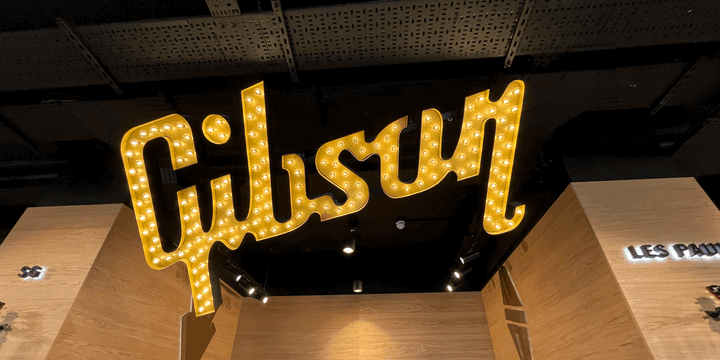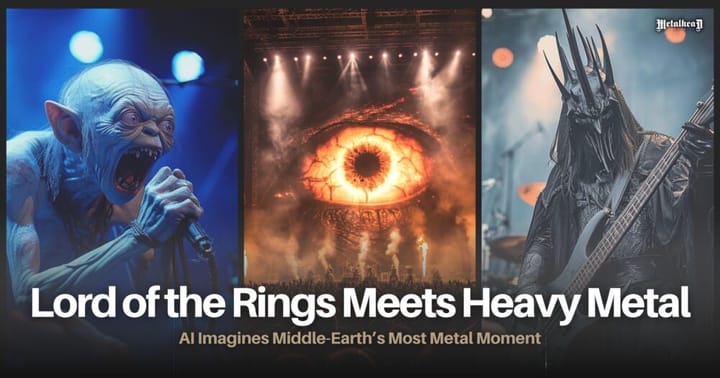Rammstein Deutschland Music Video - The Story Behind
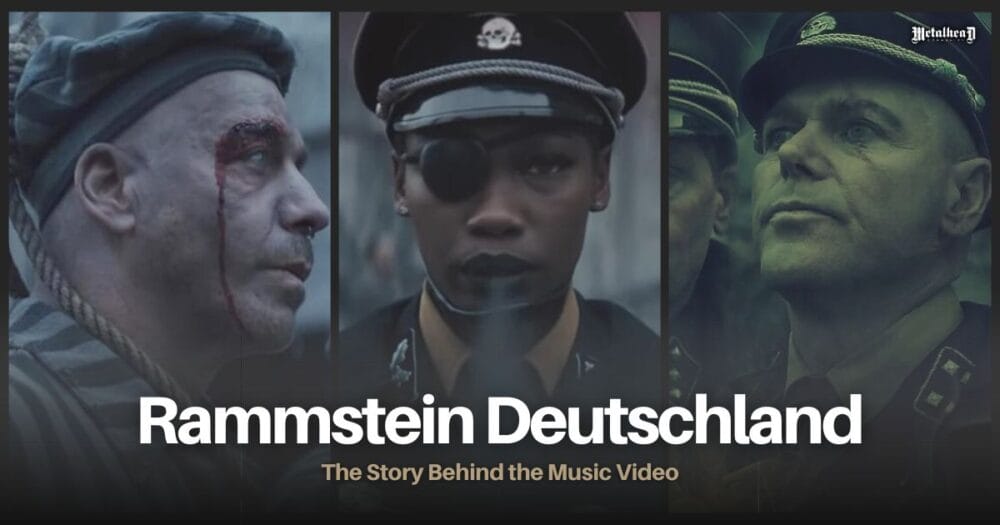
Rammstein’s "Deutschland" is the band’s first work in over 10 years and has not been without controversy. However, the video clip is more appealing to the general public than the song, taking viewers on a journey through Germany's tumultuous history, spanning from Germania Magna in the 16th century BC, through the crusades and Germany's division, to what appears to be a future where Germany is not even on Earth.
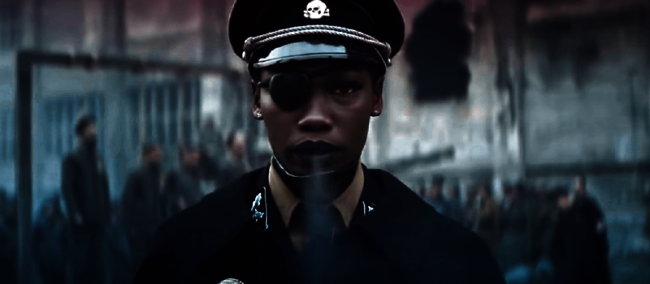
What we know about the video after witnessing it is that it is an abstract work of art with many controversial scenes
It is the first song on the album that the industrial metal band Rammstein released at 6 p.m. on Thursday, March 28, 2019, as announced, receiving half a million views in the first thirty minutes of its release. This song is part of their self-titled seventh studio album.
It has a duration of 5 minutes, and the video was directed by Specter Berlin. This marks the band's first work in over 10 years and it has not been without controversy. Before its premiere, a trailer was released that included scenes recreating the Holocaust, resulting in about 10 million visitors to the official video in just a few hours. The lyrics and the video both touch upon themes of love and hate for Germany.
The lyrics include subtle references to the country's history and to Rammstein themselves. For instance, it begins with "Du hast," the title of a popular song by the band. It also makes historical references to the reunification and separation of the country, along with an allusion to the Nazi anthem with "deutschland über allen," translated as "Germany above all," which in the Nazi era was "deutschland über alles," or "Germany above all." The change is only a single letter.
Regarding the video, it spans different periods of German history, which we will break down chronologically. However, it's essential to note that the actress Ruby Commey, a woman of color who appears throughout the video, portrays Germany in its various stages. This is evident from the opening credits of the clip.
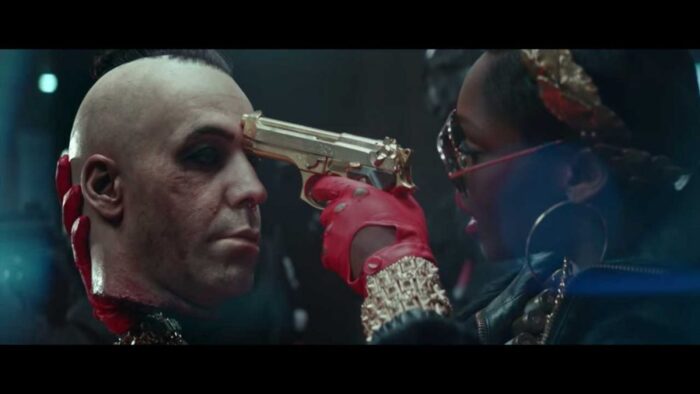
Historical Aspects Covered in the Video
- Germania Magna
The video of Rammstein's "Deutschland" begins at this point, with the caption "Germania Magna 16 A.D." For clarity, this period marks the conclusion of the Roman reconquest of Germania, the future Germany. A few years earlier, the Roman Empire had attempted to conquer these lands but suffered one of its most devastating defeats known as the Battle of the Teutoburg Forest. In this battle, three Roman legions were annihilated, with only 12 survivors out of 300. This defeat kept the Roman Empire out of Germania until 14 AD when General Julius Caesar Germanicus retaliated for the loss and eventually conquered Germania two years later. This conquest reshaped the region as a state and expanded Roman influence. In the video, Roman legionaries are depicted attacking Germany.
- The arrival of Christianity
The arrival of Christianity in Germany, although not as violent as in America, was portrayed as a transformative force in the video. It is shown that Christians, mainly foreigners, were altering the country to establish their influence. In "Rammstein's Deutschland," clergymen are portrayed as voraciously consuming Germany. The arrival of Christianity in Germany coincided with the Roman conquest of Germania, but it faded as Roman rule declined. It wasn't until the late fifth century that Christianity saw a resurgence, primarily through the baptism of King Clovis I. The nobility followed his example and imposed Christianity on the populace. Missionaries from present-day Great Britain played a role in this spread, and the sacred trees associated with paganism were eliminated. It was believed that if nothing happened following the burning or felling of these trees, it demonstrated the Christian God's supremacy.
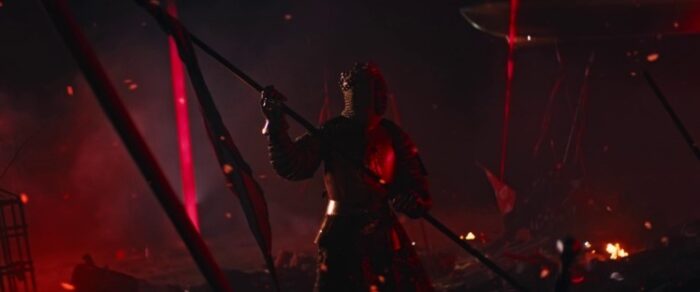
Inside Rammstein Deutschland Music Video: Exploring Its Story
- Medieval wars
In this segment, we witness Germany personified as a queen from the late Middle Ages, leading a war of the era, possibly a crusade or a conflict between kingdoms. In the context of crusades, these were a series of wars endorsed by the Pope to defend the Holy Land. During this period, a significant portion of Germany was part of the Holy Roman Empire.
Germany itself launched a crusade in 1197, summoned by Emperor Henry VI, rallying over 7,000 knights. Austria and Cyprus also participated, all in defense of Christian dominion over those lands. However, the war took an unexpected turn with the death of Henry VI, as the leading knights of the crusade returned to Germany to contest the throne and protect their territories. Within a year of the crusade's commencement, they had lost two cities.
Alternatively, the conflict depicted in Rammstein's "Deutschland" could also represent one of the many feudal wars that occurred during medieval times. These wars were often driven by the expansionist ambitions of feudal lords.
- The Inquisition
While the Spanish Inquisition is more widely recognized for its cruelty, the German Inquisition is not far behind. Interestingly, the Spanish Inquisition was the longest-lasting. In comparison, Germany witnessed four times as many witchcraft-related murders as Spain. The music video portrays the burning of an individual at the stake, though the specific reasons remain undisclosed, likely pertaining to heresy. Heresy served as the primary motive, encompassing acts that the Church deemed as threats to its authority, even seemingly minor transgressions such as women wearing trousers.
It's essential to note that all those apprehended through this process were coerced into confessing to crimes through brutal torture. Consequently, many confessed to crimes that were improbable or never occurred. At times, individuals proceeded to falsely admit to practicing witchcraft in the hope that doing so would spare them from mortal danger. Otherwise, they would face execution, even if they were innocent, but such an admission would be made with the Church's favor.

- Plague
One of the most devastating epidemics in history, the plague, emerged in the 14th century, during the period of the inquisition. At that time, Germany was divided into several kingdoms and duchies, causing the plague's impact to vary across regions. Historians estimate that one in ten Germans perished in the areas we now recognize, with some regions like Magdeburg being among the least affected. In contrast, other cities such as Cologne and Hamburg saw a more significant portion of their populations succumb to the disease.
In the video, clergymen are depicted walking alongside a horde of rats. The Church partly contributed to the epidemic by persecuting cats, considering them demonic. Consequently, the number of rats carrying fleas, which transmitted the bacteria causing the plague, surged in the absence of their natural predator, thus aiding in the disease's spread.
- Hyperinflation
Hyperinflation struck in 1921 during the Weimar Republic, following the collapse of the German Empire and the aftermath of World War I. This economic turmoil resulted from Germany's immense war debt. At the time, all coins and bills were required to have a backing in gold. However, in a desperate attempt to settle their debt, Germany began printing banknotes without this backing, inevitably causing the currency's value to plummet. In such an environment, banknotes became worth less than the paper they were printed on. Rather than issuing entirely new notes, the authorities opted to print new values over old banknotes. To provide context, half a kilogram of meat cost a staggering 36 billion marks, the German currency.
Rammstein's "Deutschland" features two scenes from this era. The first portrays a brawl involving Till Lindemann, reflecting how Germans resorted to any means to secure money for basic necessities. The second scene unfolds as Till is arrested, potentially due to the brawl. In this scene, fellow prisoners hurl bills at him, underscoring the devaluation of money during that period.
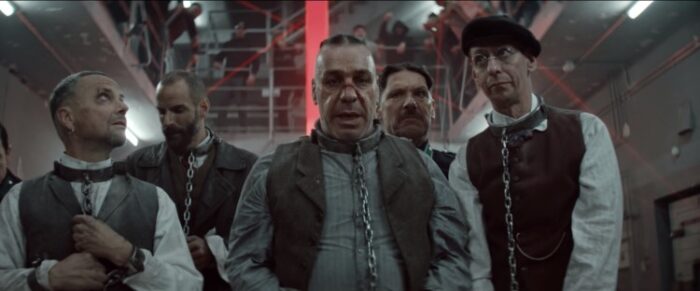
- The Hindenburg Accident
The Hindenburg was one of the largest zeppelins ever constructed, in operation for a mere year until 1937. It embarked on a transatlantic journey from Germany to New Jersey, but its arrival was delayed due to a passing storm. Tragically, while attempting to land, a fire broke out on board, ignited by static electricity and fueled by the thunderstorm. The flames swiftly engulfed the Hindenburg, leading to its catastrophic demise. This disaster claimed the lives of 35 individuals and marked the end of the zeppelin era.
In Rammstein's "Deutschland" video, gang members are depicted strolling near one of the air station's towers, just as a zeppelin dramatically crashes behind them. Subsequently, during the same period, they are observed driving a car that was prevalent at the onset of Nazism.
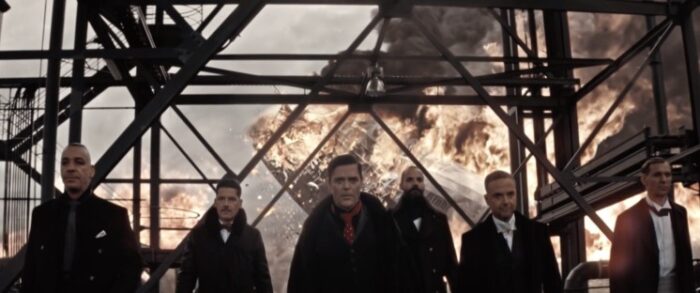
- Holocaust
In the video, the most controversial scene unfolds from left to right: a homosexual, a Jew, a political prisoner, and a gypsy are shown being hanged, evoking the horrifying history of the Holocaust. While the video does not explicitly depict World War II battlefields, it starkly alludes to Nazism through the burning of books and the Holocaust. This depiction stirred significant controversy, even reaching the German government and Holocaust memorial organizations. During this dark period, millions of individuals perished due to their differences from the ideals embraced by Hitler's Nazi regime. The victims included Jews, homosexuals, the infirm, disabled individuals, and Romani people, among other persecuted groups.
In Rammstein's "Deutschland," there's a reference to the Nazi anthem with the phrase “deutschland über allen” in the lyrics. In the video, we witness a visually impaired Germany, symbolizing the injustices committed in the concentration camps. Here, the gang members portray prisoners – a homosexual, a Jew, a political prisoner, and a gypsy – awaiting execution, while another prisoner is seen cleaning the boots of a Nazi officer who issues the fatal command.
Simultaneously, the video depicts the manufacturing and launch of the V-2 rocket, a ballistic missile used in attacks against the Allies, primarily targeting London and Antwerp. This weapon was developed in retaliation for the bombing raids conducted by the UK's Royal Air Force. Shifting back to the Holocaust scene, once the prisoners who retained their strength confronted their oppressors, they exacted their vengeance. In the video, the condemned prisoners corner the guards and execute them with shots to the head.
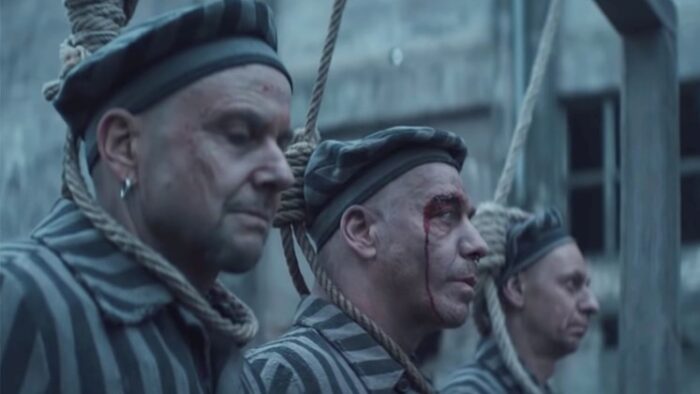
- RDA (Republica Democratica Alemana)
RDA stands for the German Democratic Republic (Republica Democratica Alemana, RDA or Deutsche Demokratische Republik, DDR), which was a socialist state in existence from 1949 to 1990. Following World War II, Germany was partitioned by the Allies, with the Western side controlled by the United Kingdom, France, and the United States, and the Eastern side by the Soviet Union. West Germany relocated its capital to Bonn, while East Germany retained Berlin as its capital, with Erich Honecker as its Chancellor.
In Rammstein's "Deutschland," we observe a group of senior Communist officials and a cosmonaut engaging in revelry within an office setting. Meanwhile, Germany is attired in a Soviet military uniform. Interestingly, two men are depicted kissing, symbolizing Leonid Brezhnev and Honecker. During this era, the Berlin Wall was erected as a means to prevent East Germans from attempting to cross into West Germany. However, human determination ultimately triumphed over repression.
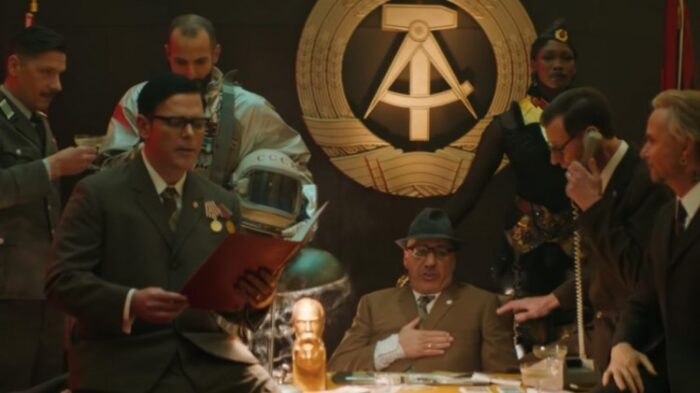
- Terrorism
In the mid-1970s, a terrorist group with Marxist ideals known as the Baader-Meinhof Group emerged in West Germany, named after its founders' surnames. They also referred to themselves as the Fraction of the Red Army. Their actions were inspired by the Uruguayan guerrillas. They were responsible for a series of robberies, bombings, murders, and even the hijacking of a plane to demand the release of their imprisoned members. In Rammstein's "Deutschland," this period is depicted when Till Lindemann dresses as a woman and, along with other gang members, engages in a gunfight. The video also portrays the kidnapping of Germany. The terrorist group's activities continued until 1993, and it was officially dissolved in 1998.
- Riots in the late 1980s
Rammstein's "Deutschland" features scenes of young people engaging in violent demonstrations, including the use of Molotov cocktails. The late 1980s saw an increase in protests on both sides of Germany, driven by different reasons. In the West, anti-fascist and left-wing groups protested, with the peak of violence occurring on May 1, 1987, coinciding with Workers' Day events. Since then, this day has often been marked by riots. In the East, riots began in 1989, coinciding with the 40th anniversary of the German Democratic Republic (GDR). These events eventually led to the reunification of Germany and the fall of the Berlin Wall.
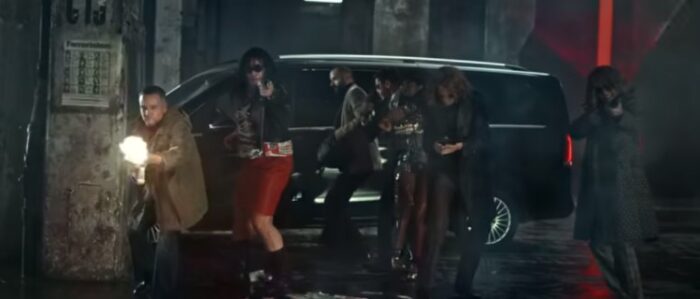
- The future
While there are no direct references to the present, Rammstein's "Deutschland" hints at a bleak future. In this part, Germany is shown aboard a spaceship, suggesting a loss of its terrestrial boundaries. However, the video also leaves us with one last historical curiosity related to both World Wars: the Leonberger dogs. In the video, Germany is portrayed as pregnant, and her delivery is attended by a cardinal, resulting in the birth of Leonberger puppies. In real history, after the First World War, only 5 of these dogs survived, and after the Second World War, only 8 remained. As a result, the entire breed shares common ancestors.
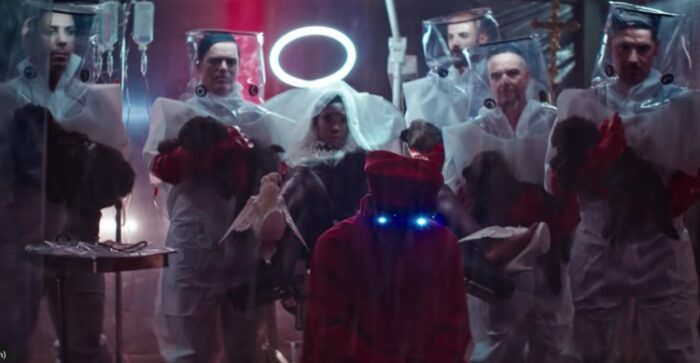
Rammstein Deutschland Music Video - Everything You Need to Know
In conclusion, Rammstein has once again delivered a video that doesn't shy away from controversy. However, the "Deutschland" video is filled with numerous elements that make it visually compelling, with moments as controversial as the Holocaust, although some of these may not have the same impact today. Did you spot another historical reference in the video? Feel free to share any additional references you noticed.
The video is a true work of art that shows different periods of Germany in a very raw and direct way, leaving the understanding to the viewer. Video Director: Specter Berlin. Production: Mmaattcchh Berlin. Score: „The Beast” written by Jóhann Jóhannsson
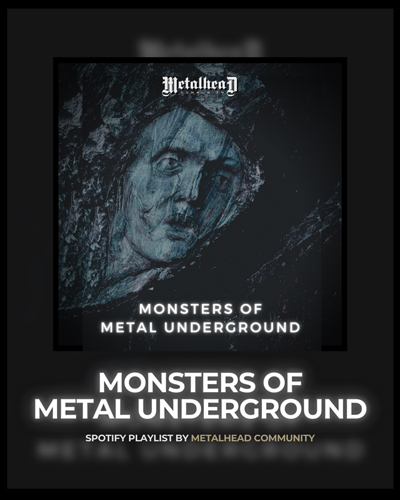
Listen to Metalhead Community's Monsters of Metal Underground playlist on Spotify

